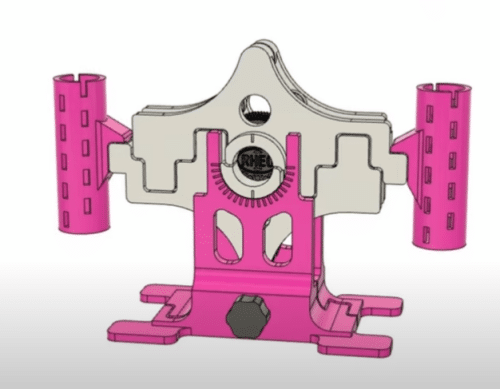Why does the cookie’s cream stick to just one wafer when twisted apart? The answer could be a groundbreaking discovery for 3D printing and flexible electronics.
When you twist an Oreo cookie open to get to the creamy middle, you’re simulating a basic rheology test, which examines how a non-Newtonian substance flows when twisted, crushed, or otherwise strained. In search of an answer, the team put cookies through normal rheology experiments in the lab and discovered that, regardless of the flavour or quantity of stuffing, the cream in the middle of an Oreo virtually always adheres to one wafer when twisted open. The cream occasionally separates more evenly between both wafers in earlier boxes of cookies.
The team’s research is an opportunity to make rheology science more accessible to the general public. To that goal, the researchers created a 3D-printable “Oreometer” – a simple gadget that firmly grasps an Oreo cookie and controls the twisting force that gradually twists the cookie open using pennies and rubber bands.

[sociallocker id=”97245″]
The researchers attached an Oreo to both the top and bottom plates of a rheometer and applied variable degrees of torque and angular rotation, noting the values that effectively twisted each biscuit apart in an experiment that they would repeat for several cookies of various fillings and flavours. The viscoelasticity, or flowability, of the cream was calculated by plugging the observations into formulae. They also recorded the cream’s “post-mortem distribution,” or where it ended up after being twisted open, for each trial.
“We had expected an effect based on size,” says Crystal Owens, an MIT mechanical engineering PhD candidate who studies the properties of complex fluids. “If there was more cream between layers, it should be easier to deform. But that’s not actually the case.” Surprisingly, they discovered that the cream tended to stay to the inward-facing wafer when they mapped each cookie’s result to its original position in the box: The cream ended up on the right wafer in the cookies on the left side of the box, whereas the cream mainly ended up on the left wafer in the cookies on the right side.
“My 3D printing fluids are in the same class of materials as Oreo cream,” she says. “So, this new understanding can help me better design ink when I’m trying to print flexible electronics from a slurry of carbon nanotubes, because they deform in almost exactly the same way.”
Watch their simulation video here.
[/sociallocker]





